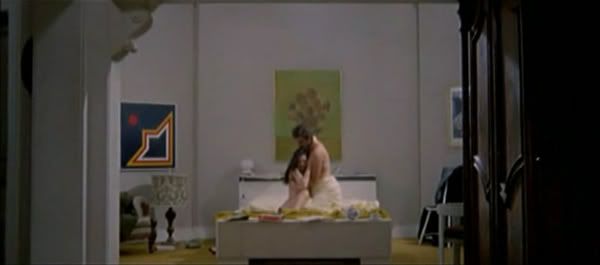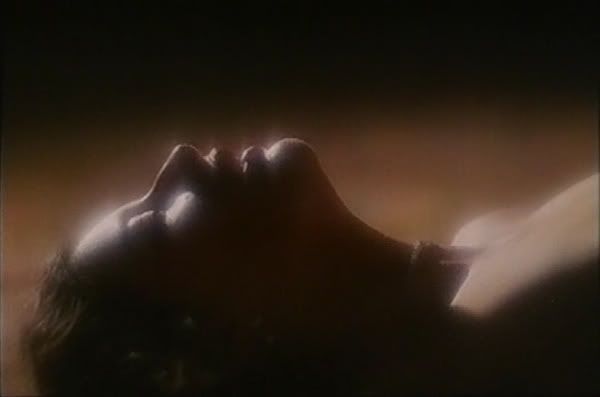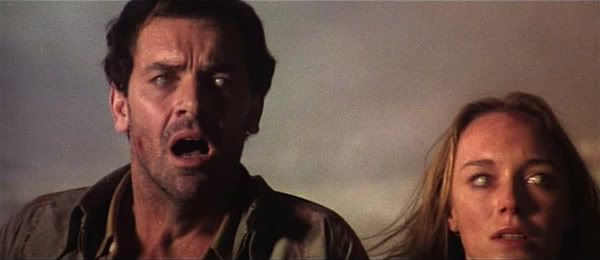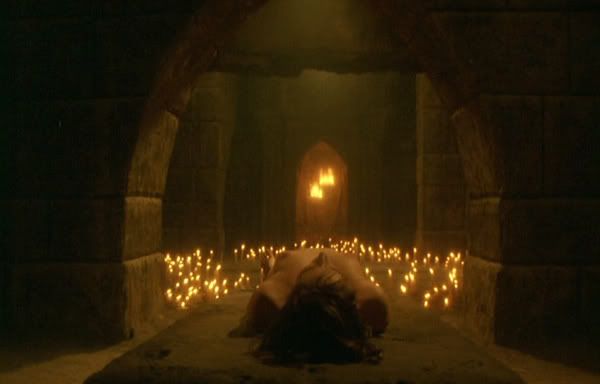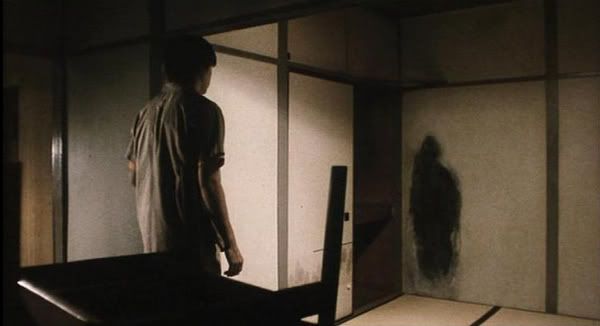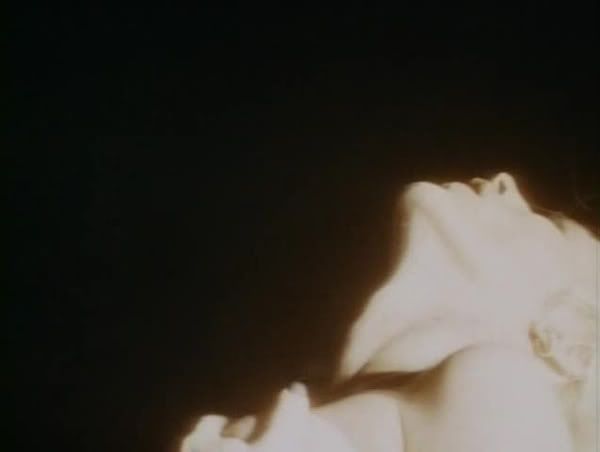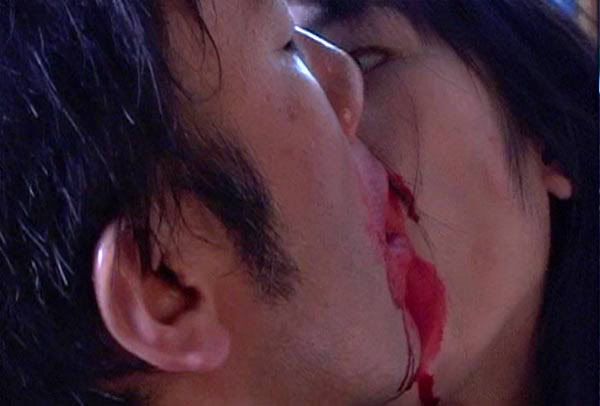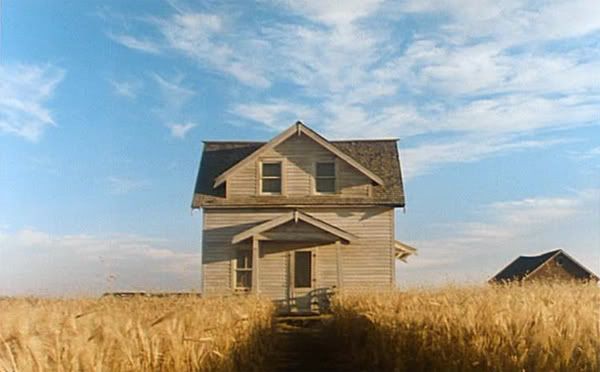DIRTY MARIA (TAKAHISA ZEZE, 1998)

The pink film "genre" from Japan is endlessly fascinating to me. It seems like the entire genre has been entirely ignored in the west, excepting occasions where genre fans view the film for the titillating aspects. Which can't be faulted, as even in their native Japan, the target audience for the pink film is almost the equivalent as the target audience of pornographic videos here in America; they are sold as sex films, and generally accepted as sex films. What is so fascinating to me is that in virtually all of the better examples of the form that I've had the opportunity to see, the films transcend being simple sex films, in a really potent way.
The genre shares many characteristics with films like Through the Looking Glass and the hardcore films of Roger Watkins; namely a sense of disillusionment, existentialism, and loss of individuality. One will notice that these descriptors can also often be applied to canonical art house films like those of Robert Bresson, Ingmar Bergman, and to some extent, the films of the French New Wave. So why is it that these films are so easily dismissed?
The easy answer, of course, is that they're primarily sex films. They're low-budget, generally barely achieving feature length (with run times almost always ranging between 55 and 75 minutes long), and marked as a primary example of Japan's "otherness." Aside from the intellectual conceits, which are virtually unmentioned by most, the films are notorious for their depictions of S/M situations, women in dominant positions being abused, and a fetishistic attention to female nipples. In the same way critics cannot generally see past the large breasts present in Meyers films, ignoring his remarkably progressive sense of editing, the emotional impact, political commentary, and thought-provoking ideas set forth in pink films are almost always ignored.

Of course, as I've already mentioned, it's these marginalized attributes that makes the genre so potent to me. I'll be the first to admit that not every film from the genre stands up to my preferred standards; many do exist simply as poorly-made smut. But in an industry that cranks out hundred of films every year, one can't expect each and every one to be perfect. It'd be an absurd concept.
In the context of the films that work the best, the "otherness" present in the depictions of sex doesn't seem so off-putting. Often the violent or sadomasochistic sex works as a perfect extension of characterization and emotional states that are being played out on film; generally dramatic events are remarkably intense, and what is generally considered to be "normal" sex would be out of place. "Normal" sex wouldn't punctuate any of the films' action, intellect, or emotion; like any smutty late night cable movie in America, it would be sex for the sake of sex.
Takahisa Zeze is a director who is unofficially considered part of the shitenno, or Four Heavenly Kings. To quote Roland Domenig from his particularly perceptive article Vital Flesh: The Mysterious World of Pink Eiga, the films of the Four Heavenly Kings were notoriously "'difficult' - they had too little sex, and gloomy, complicated plots." Compared to the banal, generic examples of the genre, this is certainly a true statement. But that is why the films from the shitenno are remarkable works of cinema.

Zeze's 1998 film Dirty Maria is a wonderful example of the type of cinema that the Four Heavenly Kings are notorious for. It's difficult, emotionally charged, existential, very gloomy, and enigmatic. It's also an incredibly beautiful film, taking full advantage of the snow-covered, isolated spa that the second half of the film primarily takes place at.
The film begins by introducing us to the titular Maria (who; coincidentally, is never actually named throughout the film [if I'm wrong here, please correct me]-- so I'm relying on the title for this significant information), who works as a secretary and sort of maid (for want of a better word) at a beauty salon. She is mostly quiet and keeps to herself, going home at night to her naively happy husband and small child. We are then introduced to Murakami, a taxi-driver who appears to be utterly dejected. We later find out that he is looking for his wife, Mayumi.
Maria has killed Mayumi. Whether out of jealousy, or something bigger, she kills Mayumi and cuts up her body, distributing the body parts in opaque black plastic bags to different dumpsters throughout the city she lives in. When Murakami comes to the beauty salon in a desperate attempt to find Mayumi, Maria informs Murakami that Mayumi had mentioned wanting to go back to a spa that she had visited on a company trip. Soon Maria and Murakami are in a car together driving across the icy expanse of abandoned roads, on their way to the nearly abandoned spa, that Maria herself also has a peculiar liking for.

Once the characters are subtly established, the remainder of the film explores the relationship that Murakami and Maria develop as their own personal secrets are revealed to each other and they find themselves linked in a very personal way. There is no love or happiness in the relationship that our protagonists develop, but rather there is a sense of desperation and necessity.
As previously mentioned, the film is gorgeous. Epically framed, snow covered mountains stand in the background of frames while Maria and Murakami, both wearing striking red clothing, stand against the shockingly white snow, the contrast between the bodies and their surroundings forcing the viewer to associate these two disparate individuals as compulsorily linked. The visuals in the film also create an inexorable calm-- there is never any superfluous movement in the frame, only the stoic environment and shockingly apathetic characters.
But what is most rewarding and enigmatic about the film is Zeze's visual and narrative detachment. The motives of both Maria and Murakami are completely obscured to us as viewers. At no point in the film are we allowed into the psychological state that had set forth the characters actions that have been playing out throughout the film. We occasionally get hints, such as when Maria remarks, in regards to killing Mayumi, ""It was surprisingly easy to kill her... because we die so easily." We also get hints into Murakami's utter frustration when he pulls down Mayumi's underwear from a clothesline outside and scatters it across the small bedroom floor. The camera remains still for most of the film, excepting, of course, occasional tracking shots that are strikingly noticeable when they follow all the calm.

In fact, much of the cinematography wouldn't be out of place in a Michael Haneke film; events beginning in the frame of the camera, then moving out of the frame while the camera stays still. There is also something genius about the hyper-literal use of an "icy" environment to help emphasis the "icy" detachment present in our protagonist's lives. The film is also almost completely devoid of dialogue; I would estimate that out of the 75 minutes that make up the films runtime, only 10 to 13 involve any dialogue.
As viewers we are never met with a sense of closure to the events that we have been introduced to. Instead, we are bombarded with atmosphere and implications; we're expected to feel instead of to discover. Aside from the detachment that's present throughout the film, Zeze throws in abjectly odd, subtle events that heighten the atmosphere present. For example, in an early scene with Murakami driving his taxi, a customer gets in and begins asking Murakami if he's "ever done S&M," because he has just gone to a telephone club with somebody's wife. In the middle of the man's story, Murakami asks the man to get out of the car, as he's had enough of his job for the day. Aside from revealing Murakami's utter frustration with his disloyal wife, it also sets up the idea of giving up that permeates the ideas in the film. Another particularly pertinent example comes when Maria is having sex with her co-worker Sawai. As he pulls off his underwear and reaches for a condom from his jeans, she stops him, remarking, "we don't need that this time." There is an utter sense of futility in what she says, revealing that she too has already given up, she's no longer concerned with most of the world.
All in all the film is an intensely atmosphere window into characters who are emotionally empty, yet hanging on to any threads of feeling that they can grasp, going through life in a desolate trance, trying to connect in whatever way they can.

















